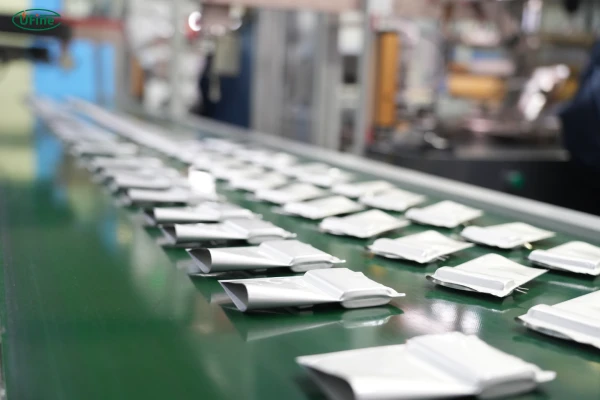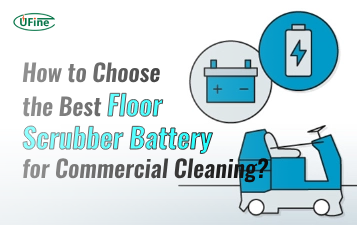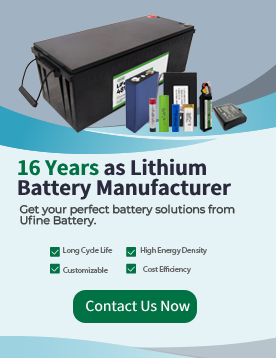Lithium batteries power our daily lives—from smartphones to electric vehicles. But have you ever wondered what goes into making them? Lithium battery production requires a combination of advanced materials, precise engineering, and strict quality control.
In this article, we’ll explore the key raw materials needed for lithium battery production, their functions, and why they are crucial for battery performance.
Part 1. Key components of a lithium battery
A lithium-ion battery consists of four main parts:
- Cathode – Determines battery capacity and voltage
- Anode – Stores and releases lithium ions during charging and discharging
- Electrolyte – Enables ion movement between the anode and cathode
- Separator – Prevents short circuits by keeping the anode and cathode apart
Each of these components is made from specialized materials designed for safety, efficiency, and longevity.
Part 2. Essential materials for lithium battery production

2.1 Cathode Materials
The cathode is a crucial part of a lithium battery because it defines the energy storage capacity. Common cathode materials include:
- Lithium Cobalt Oxide (LiCoO₂) – Found in smartphones, tablets, and laptops. Offers high energy density but is expensive and less stable.
- Lithium Iron Phosphate (LiFePO₄) – Used in power tools and electric vehicles. It’s safer and has a longer lifespan.
- Lithium Nickel Manganese Cobalt Oxide (NMC, LiNiMnCoO₂) – Balances energy density, safety, and lifespan, making it ideal for electric vehicles.
- Lithium Nickel Cobalt Aluminum Oxide (NCA, LiNiCoAlO₂) – Used in high-performance EVs like Tesla. Provides high energy density and power output.
- Lithium Manganese Oxide (LMO, LiMn₂O₄) – Common in hybrid and electric vehicles. Offers fast charging and good thermal stability.
Each cathode material is selected based on battery performance, cost, and application needs.
2.2 Anode Materials
The anode stores lithium ions when the battery is charged. The most common anode material is graphite due to its high efficiency and long cycle life.
Other anode materials include:
- Silicon-based anodes – Higher energy storage but degrades faster.
- Lithium titanate (LTO) – Extremely stable with fast charging but lower energy density.
Graphite remains the industry standard, but silicon anodes are gaining attention for future battery improvements.
2.3 Electrolyte Materials
The electrolyte enables lithium-ion movement between the cathode and anode. It’s usually made from a lithium salt dissolved in an organic solvent.
Common electrolyte materials include:
- Lithium hexafluorophosphate (LiPF₆) – The most widely used lithium salt for high conductivity.
- Organic solvents (EC, DMC, DEC, EMC) – Help transport lithium ions efficiently.
- Solid-state electrolytes – A new technology that enhances safety by eliminating liquid components.
Electrolytes must be stable, non-reactive, and highly conductive to ensure battery performance.
2.4 Separator Materials
The separator is a thin membrane that keeps the anode and cathode apart while allowing lithium ions to pass through.
Common separator materials include:
- Polyethylene (PE) – Offers good chemical resistance and thermal stability.
- Polypropylene (PP) – Used in high-performance batteries for improved safety.
- Ceramic-coated separators – Increase resistance to overheating and reduce fire risks.
Separators are crucial for battery safety, preventing short circuits and thermal runaway.
2.5 Conductive Additives and Binders
To enhance performance, lithium battery production includes conductive additives and binders that improve electron flow and hold battery components together.
- Conductive carbon black – Enhances electrical conductivity.
- Carbon nanotubes (CNTs) – Improves charge/discharge efficiency.
- PVDF (Polyvinylidene fluoride) binder – Holds the anode and cathode materials in place.
These materials ensure stable operation and improve overall battery life.
Part 3. The manufacturing process of lithium batteries
Lithium battery production involves several steps, including:
- Mixing Raw Materials – Cathode and anode materials are processed into fine powders and mixed with binders.
- Coating Electrodes – The anode and cathode materials are coated onto metal foils.
- Drying and Rolling – Coated electrodes are dried, compressed, and cut to size.
- Assembly – Electrodes, separators, and electrolytes are assembled into battery cells.
- Sealing and Formation – Batteries are sealed, charged, and tested for quality control.
Each step requires precision and strict quality control to ensure safety and efficiency.
Part 4. The role of Ufine Battery in lithium battery production
As a leading Chinese custom lithium battery manufacturer, Ufine Battery specializes in producing high-quality lithium-ion and lithium-polymer batteries.
We offer customized battery solutions for various industries, including:
✅ Golf cart Batteries
✅ Medical device batteries
✅ Power tool batteries
✅ Smartwatch and consumer electronics batteries
If you need custom lithium battery solutions, contact Ufine Battery today!
Part 5. Future trends in lithium battery materials
The demand for safer, longer-lasting, and more efficient batteries is driving innovation in lithium battery materials. Some emerging trends include:
- Solid-state batteries – Using solid electrolytes for improved safety and performance.
- Silicon anodes – Increasing energy capacity in future battery designs.
- Cobalt-free cathodes – Reducing reliance on expensive, ethically challenging materials.
These advancements will revolutionize energy storage, making batteries more efficient and sustainable.
Part 6. FAQs
How do conductive additives improve battery performance?
Conductive additives, such as carbon black or carbon nanotubes, enhance the electrical conductivity of electrodes, reducing internal resistance and improving power output.
Why is copper used for the anode current collector?
Copper has excellent electrical conductivity and does not react with lithium, making it an ideal material for efficiently transporting electrons from the anode.
What are the environmental impacts of lithium battery materials?
Mining lithium, cobalt, and nickel can cause environmental damage, including habitat destruction and water pollution. Sustainable sourcing and recycling can help mitigate these effects.
How does the purity of lithium affect battery efficiency?
High-purity lithium reduces impurities that can degrade battery performance, ensuring better energy storage, longer lifespan, and improved charge cycles.
Are there any alternatives to cobalt in lithium batteries?
Yes, cobalt-free cathodes, such as lithium iron phosphate (LiFePO₄) and manganese-rich NMC variants, are being developed to reduce cost and environmental impact.
Why is aluminum used for the cathode current collector?
Aluminum resists corrosion and prevents unwanted lithium deposition, making it the preferred choice for ensuring stable electrical flow in lithium battery cathodes.
How does material thickness affect battery performance?
Thicker electrodes can store more energy but may slow down ion movement, reducing charge/discharge speed. Optimizing thickness balances capacity and power output.
Related Tags:
More Articles

How to Choose the Best Floor Scrubber Battery for Commercial Cleaning?
Selecting the ideal floor scrubber battery ensures a long runtime, rapid charging, and minimal maintenance for efficient commercial cleaning operations.
Battery for Blower vs Battery for Leaf Vacuum: Which One Should You Choose?
Battery for blower vs leaf vacuum—learn the key differences in power, fit, and runtime to choose the right battery for your outdoor tool needs.
How to Choose the Right Battery for Blower?
Choosing the right blower battery? Consider voltage, capacity, chemistry & usage. This guide helps match the best battery for peak performance.
How to Choose the Best Insulated Battery Box for Lithium Batteries?
Choosing the Best Insulated Battery Box for Lithium Batteries? Discover key factors such as size, material, and safety for optimal protection and performance.
7 Critical Elements on a Lithium Battery Shipping Label
What must be on a lithium battery shipping label? Learn 7 key elements to ensure safety, legal compliance, and correct handling across all transport modes.



